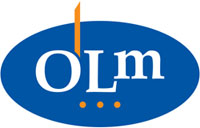LiNA LapGuard Smoke Filtration System
FUNCTIONALITY
Remove smoke and odours
With ULPA filter with active carbon, LiNA LapGuard offers evacuation and filtration of electrosurgical
smoke during laparoscopic procedures. By using LiNA LapGuard the patient’s and staff’s exposure to
potentially harmful smoke is minimised.
Improved visibility
A better view of the surgical site is secured resulting in a more efficient procedure.
Easy to use
Attach the luer lock connector to a trocar system with gasport. During extensive use of electrosurgery
the roller clamp may be adjusted to allow for a constant gas flow.


SAFETY
Clean air in the operating room
Several studies confirm that electrosurgical smoke affects the health of both staff and patients and reports
indicate that headache, nausea and upper respiratory irritation are amongst the most common issues[1].
The smoke consists of carbonized tissue, blood, viral particles, DNA, bacteria, carbon dioxide, toxic
gases and water and these airborne particles are small enough to penetrate deep into the respiratory
tract[2].
As standard surgical masks cannot effectively filter these particles, smoke evacuation has become
a topic of immediate importance. National nurse associations and authorities including AORN and
NIOSH recommend that smoke should be removed using smoke evacuators [3, 4]. In addition, during
laparoscopic surgery, surgical smoke will impair visibility in the peritoneum. Hence smoke should be
evacuated and filtered[5].
[1] “Surgical smoke-a review of the literature” – Barrett WL, Garber SM
– Business Briefing: Global Surgery. 2004;1-7[2] “Electrosurgery smoke: hazards and protection” – O’Grady KF; Easty AC;
Toronto Hospital, Ontario, Canada – J Clin Eng. 1996 Mar-Apr;21(2):149-55[3] “Hazard control 11 (HC11)” – NIOSH – Publication no. 96-128 – September 1996[4] “AORN Position Statement – Statement on Surgical Smoke and Bio-Aerosols”, approved by
House of Delegates, Anaheim, CA. April 2008[5] “Surgical Smoke – A concern for infection control practitioners” – Girolamo A. Ortolano, Joseph S. Cervia, Francis P. Canonica –
Managing Infection Control, August 2009 (k8-54)
